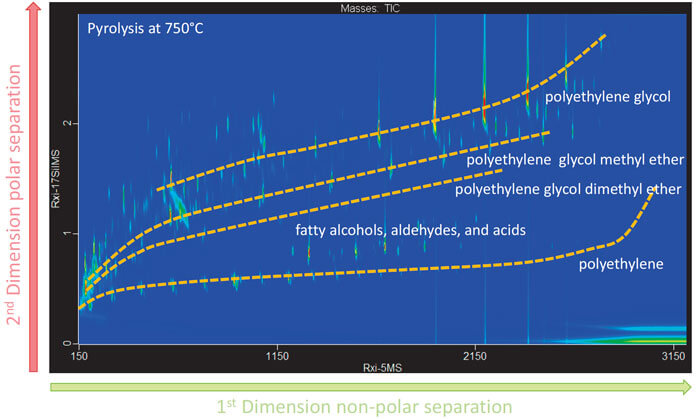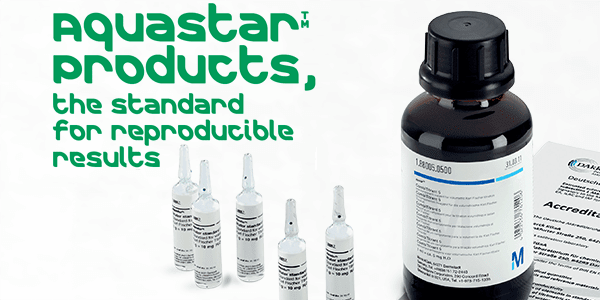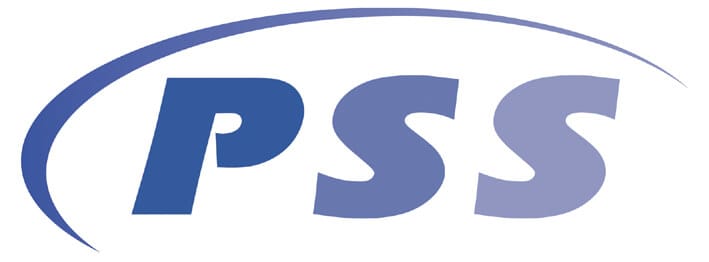Introduction
LECO's Pegasus 4D platform is uniquely suited to separate the polymer profile from the sample matrix. Thermal desorption (TD) was used to detect the volatile to semi-volatile components in the sample of toothpaste, whereas pyrolysis (Py) was used to analyze the non-volatile components by thermal decomposition and subsequent detection of the volatilized fragments.
Both the additives and the polymer spectra became more easily identifiable The added peak capacity of GCxGC, the automated peak find and true signal deconvolution capabilities of ChromaTOF software make possible effectively detect and identify components, while the robust open ion source on the Pegasus 4D increases productivity.

 Figure 1. Contour plot from Py-GC×GC-TOFMS analysis of a name-brand toothpaste identified to contain polymer microbeads. Polyethylene was listed under the inactive ingredients on the product label and was detected as indicated by the oligomers eluting in the lower portion of the contour plot.
Figure 1. Contour plot from Py-GC×GC-TOFMS analysis of a name-brand toothpaste identified to contain polymer microbeads. Polyethylene was listed under the inactive ingredients on the product label and was detected as indicated by the oligomers eluting in the lower portion of the contour plot.Experimental
About 20 mg of toothpaste was loaded into a quartz tube, plugged with quartz wool, and loaded into a CDS Pyroprobe 5200 series coupled to a LECOPegasus 4Daccording to themethod details below. Thermal Desorption: 50°C to 250°C at 100°C/min, held for 2 min
Pyrolysis: 250°C to 750°C at 100°C/s, held for 2 min






